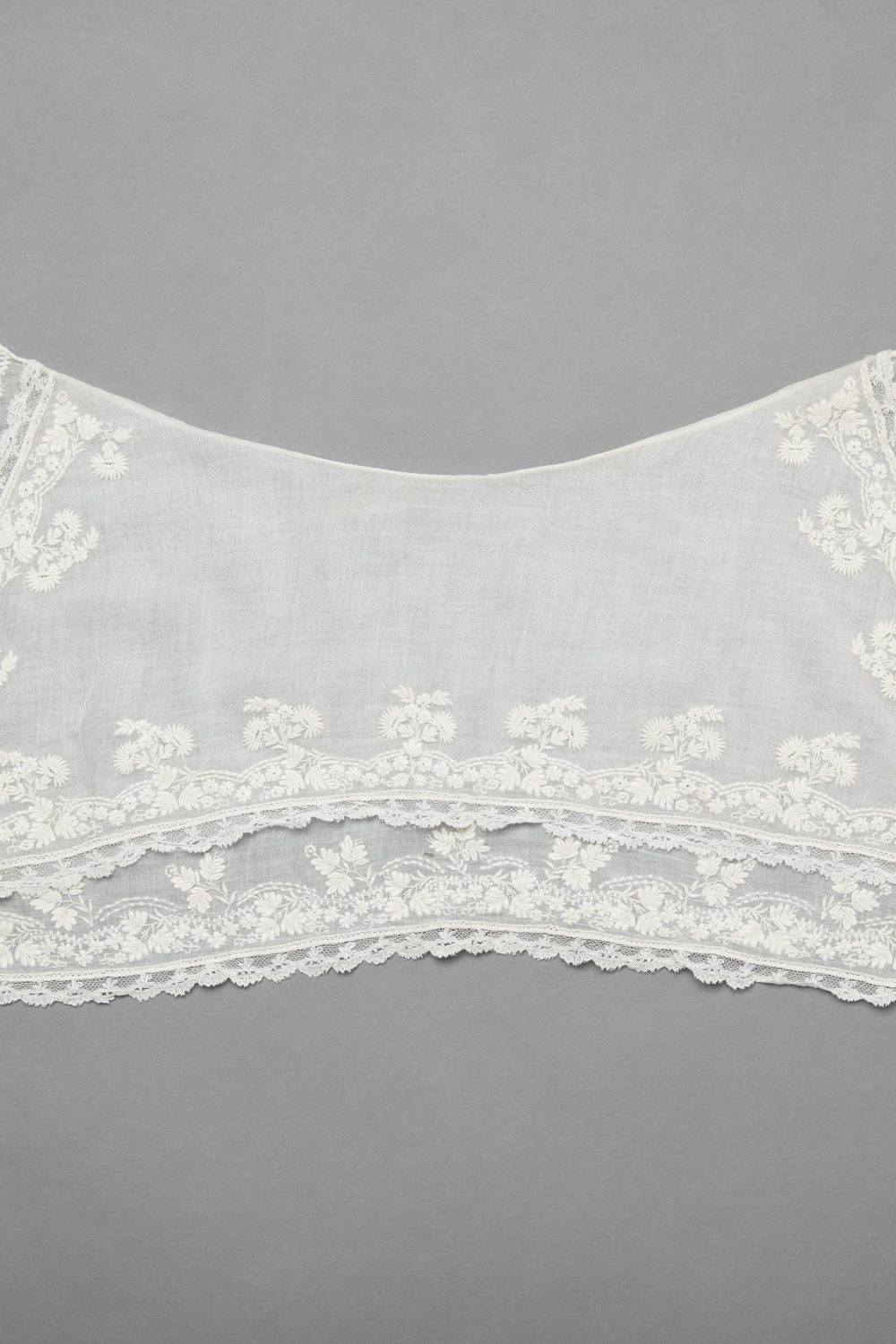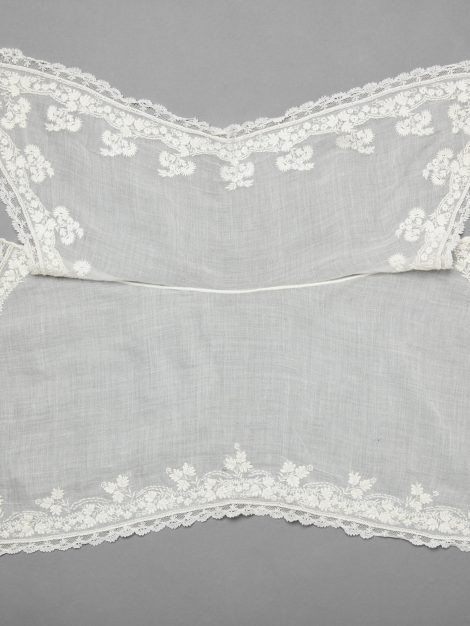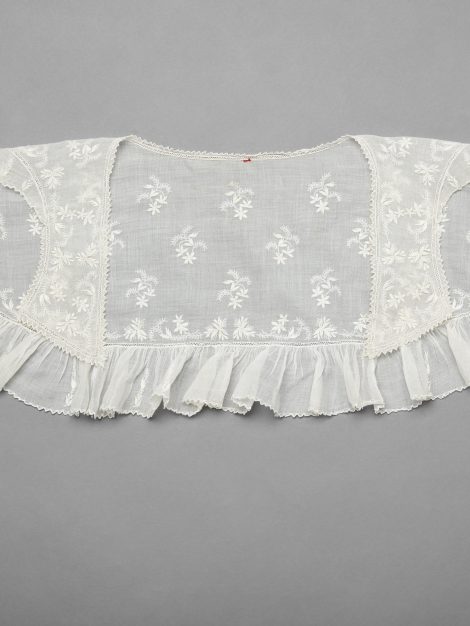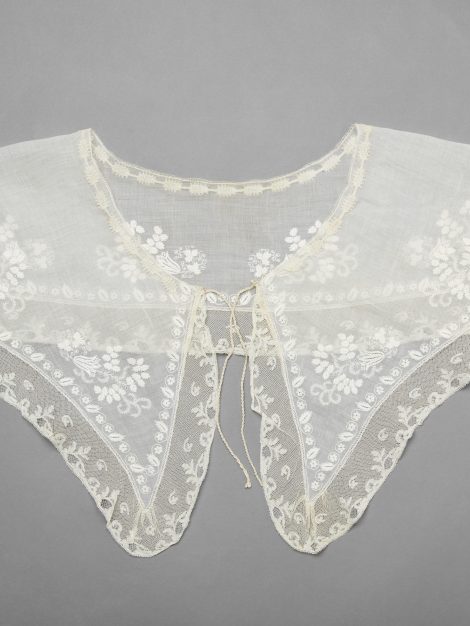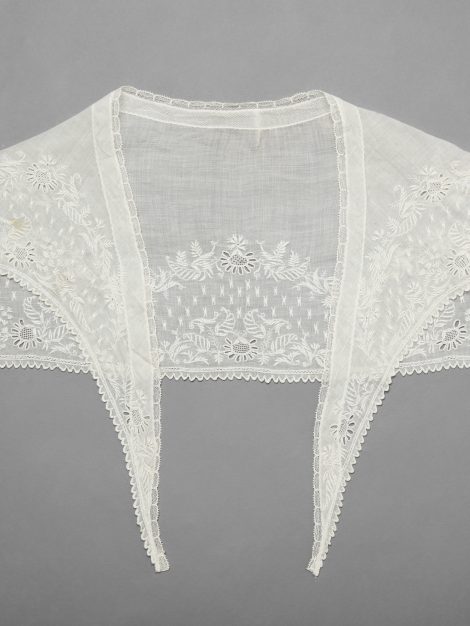The John Bright Collection owns a large number of items of white muslin neckwear embroidered with whitework motifs, mainly dating from the second quarter of the 19th Century. A selection has been photographed both flat, to indicate the overall shape, and folded as in wear. (See Related Items). The broad shoulder line of dresses from the mid 1820s to the mid 1830s, created by the expanding size of their sleeves, provided the perfect platform for large collars, or pelerines as they were called at the time, and many were illustrated in the fashion plates of the period. They were embroidered by both amateurs, as a hobby, and professionals, many of whom were outworkers whose work was sold to the public by milliners and merchants. Printed embroidery patterns, examples of which from the 1810s can be seen as a Related Item, continued to be published in women’s magazines such as Ackermann’s Repository and the Lady’s Magazine. These designs could be adapted to suit various shapes of collars as they were transferred to the fabric by means of tracing, pricking and pouncing, and interpreted in favoured stitches. Unsurprisingly, given the work involved in making them or the expense of buying them, collars were transferred from dress to dress, their versatility having the added advantage of making them easy to launder.
This collar is one of many double-layered examples surviving from this period, and in common with them the design of the upper layer relates to that below, but is not identical. The upper motifs are primarily floral, while those below are based on foliage. The design has been adapted to fit the front of the lower layer. Characteristic are the isolated motifs above a continuous border of a simpler pattern, worked in padded satin stitch and trailing (a stitch frequently used for stems).
